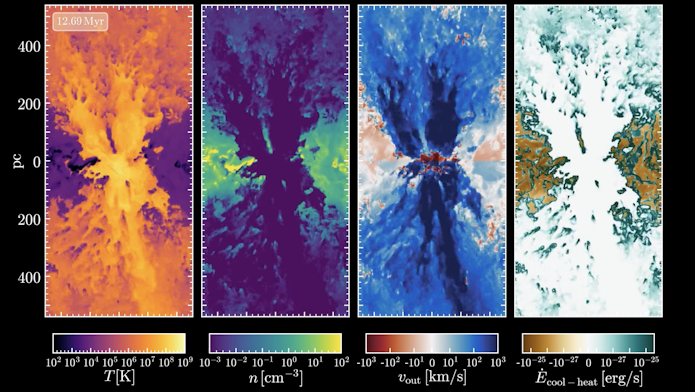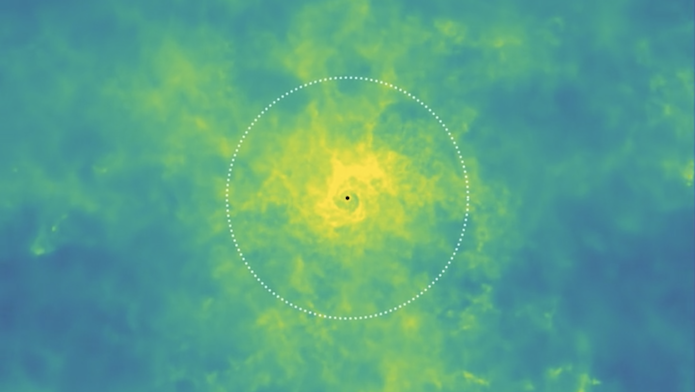Super Bubble Expanding

By clicking to watch this video, you agree to our privacy policy.
Read More
Slices through a high-resolution, three-dimensional simulation of a super bubble expanding through and then breaking out of a stratified turbulent interstellar medium. From left to right, the panels show the temperature, number density, outward velocity and radiative energy transfer rate (where teal indicates cooling and brown indicates heating). In this simulation the super bubble is powered by the successive detonation of ~300 supernovae in the center of the domain, which is representative of what we expect to result from an average star cluster in this high gas surface density environment. After breaking out of the confining interstellar medium the super bubble clears a “chimney” through which it efficiently vents a large fraction of its energy into the region above and below the disk. This large energy flux into the surrounding medium has the potential to dramatically impact the ability of a galaxy to accrete new gas to sustain ongoing star formation and, therefore, can play a major role in determining the evolution of galaxies. This simulation was published as part of a larger work that can be found here.
Zooming into Supermassive Black Holes

By clicking to watch this video, you agree to our privacy policy.
Read More
Most sizable galaxies host a supermassive black hole at their nucleus, and understanding the co-evolution of black holes and galaxies is a major unsolved problem in astrophysics. This animation shows results from new state-of-the-art cosmological simulations employing hyper-refinement techniques and the star formation and feedback model of the FIRE project. The color scale indicates projected gas surface density, zooming from 1 Mpc scale down to the central 10 pc of a massive star-forming galaxy at the peak epoch of cosmic activity. The dynamic range covered by the simulation allows, for the first time, the explicit modeling of the transport of gas from cosmological infall down to the accretion disk surrounding the central supermassive black hole.